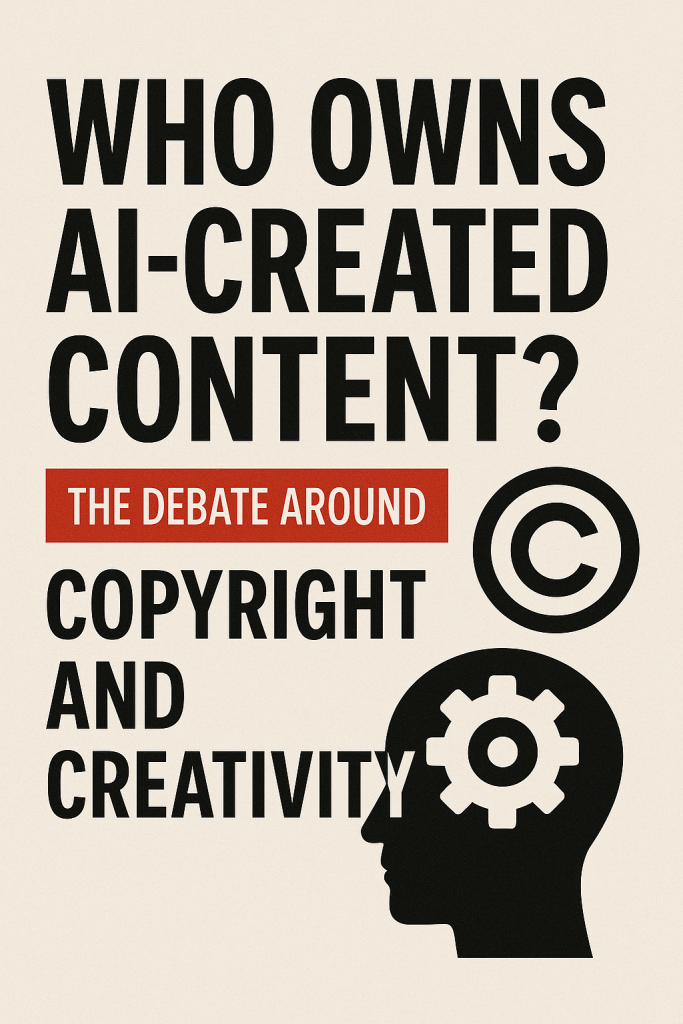Artificial intelligence can now write stories, paint pictures, compose music, and more. But as machines create more content, a tricky question keeps coming up: who owns the rights to something created by AI?
If a computer helps write a book or design a logo, can a person claim it as their own? Or does it belong to no one? These questions matter now more than ever, especially for writers, artists, and everyday users exploring new AI tools.
Don’t worry if the legal side feels confusing—we’ll walk you through it step by step.
Table of Contents
Key Takeaways
- AI-generated content is not protected by copyright unless a human made a meaningful creative contribution.
- Current laws focus on human authorship, not machines.
- Users of AI tools often don’t fully own the content produced unless stated clearly in the tool’s terms.
- Legal systems around the world are still figuring it out, so the rules may change in the future.
- If you’re using AI tools for creative work, read the terms of service carefully and keep records of your input.
Who (or What) Owns AI-Created Work?
Under current copyright law in many countries, including the United States, only humans can be legal authors. That means if a machine creates something on its own—with no real human creativity involved—it likely can’t be copyrighted.
For example:
- If you press a button and the AI generates a painting entirely on its own, no one owns that painting in a legal sense.
- If you guide the AI with detailed prompts and then make changes to the result, you might be able to claim some ownership—but it depends on how much you contributed creatively.
Real-Life Example:
In 2023, a graphic novel creator used AI to generate images. The U.S. Copyright Office ruled that the text and layout (written and designed by a human) were protected, but the AI-generated images were not.

Why This Matters
This issue affects:
- Writers and artists who use AI tools to help with their work.
- Businesses and marketers creating content with AI.
- Everyday users making fun images or writing poems with chatbots.
If you assume you own the work and later try to sell or publish it, you could run into legal trouble—or find out that someone else can use the same content freely.
What Do the AI Tool Terms Say?
Most AI platforms (like ChatGPT, Midjourney, or DALL·E) have their own rules. Some say:
- You own the content you create with the tool, as long as you follow their guidelines.
- Others keep some rights for themselves or make it clear that the content has no copyright protection.
Helpful Tip:
Always read the terms of service before using an AI tool for serious projects. These documents explain what you can do with the content and whether you have permission to use it commercially.
Is the Law Going to Change?
Probably. Around the world, governments are starting to debate how AI should fit into copyright law.
Some questions they’re considering:
- Can we create a new category for “AI-assisted” works?
- Should there be rules about how much human effort is needed for copyright?
- Who is responsible if AI content breaks copyright laws or copies someone else?
This means that even though the rules today might seem unclear, changes are coming.
What Can You Do Now?
If you’re using AI to create content, here are some safe steps to follow:
- Add your own creative input. The more you guide, edit, and reshape the AI’s output, the more likely your work could qualify for protection.
- Document your process. Save your prompts, notes, and edits to show how you contributed creatively.
- Don’t rely only on AI. Use it as a tool—not a replacement—for your unique ideas.
- Check the terms of use. Make sure you’re allowed to use the content, especially if it’s for business or public use.
- Stay updated. Laws are evolving, so keep an eye on reliable news sources or legal guidance.
Final Thoughts
As AI continues to shape how we create and share content, the rules around ownership are still catching up. Right now, the safest path is to treat AI as a helpful assistant—not the sole creator.
The more effort and originality you bring to the process, the more likely you are to hold the rights to your work.
Keep learning, stay creative, and don’t be afraid to explore—but do so with a little caution and a lot of curiosity.
Looking for more beginner-friendly guides? Check out our articles on AI tools, safe content use, and digital rights for creators.
